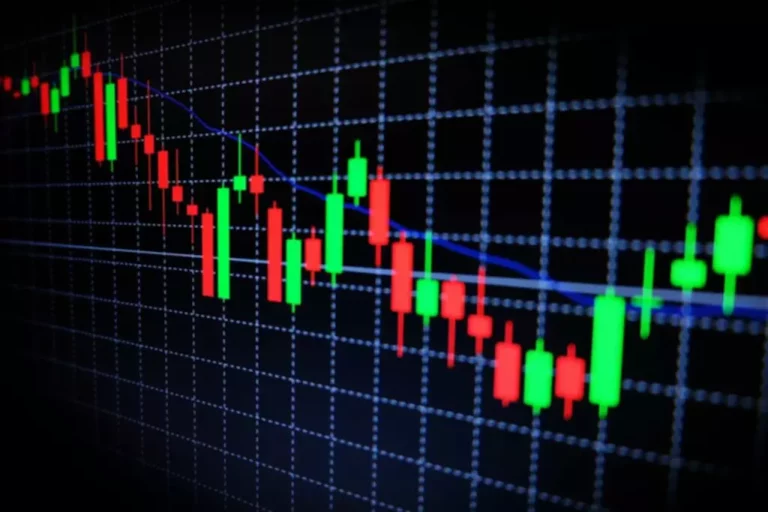Content
It’s this information that makes each NFT unique, and as such, they cannot be directly replaced by another token. Banknotes, in contrast, can be simply exchanged one for another; if they hold the same value, there is no how to create a non-fungible token difference to the holder between, say, one dollar bill and another. In the near future, you’ll be able to trade Flow NFTs on Rarible, as revealed in June 2021 after the team raised $14.2 million to build the marketplace on the Flow blockchain. Once you go to ‘Studio’, create a new family and pay the 0.01 AVAX fee.

Step 4: Choose the Most Effective NFT Platform

You’re probably most familiar with blockchain as the underlying process that makes cryptocurrencies possible. In the incipient market for NFTs, use cases are still being developed. An NFT JPG file by Beeple, a South Carolina-based artist, recently sold for $69 million at venerable auction house Christie’s. It’s a process called “bridging.” But remember, bridging costs gas fees, and it makes sense to bridge lots of Ethereum at once than a few since the fee will be Digital asset the same. Save for gas, the Polygon NFT experience on OpenSea is the same as Ethereum NFT. Another blockchain available on OpenSea is Klaytn, a blockchain popular in Korea but has limited global appeal.
What Is an NFT and How Do You Create One?
NFTs, like any digital items on the Ethereum blockchain, are created through a special Ethereum based computer program called a “smart contract”. These contracts follow certain rules, like the or standards, which determine what the contract can do. NFTs and Ethereum solve some of the problems that exist on the internet today. As everything becomes more digital, there’s a need to replicate the properties of physical items like scarcity, uniqueness, and proof of ownership in a way that isn’t controlled by a central https://www.xcritical.com/ organization. For example, with NFTs, you can own a music mp3 file across all Ethereum based apps and not be bound to one company’s specific music app like Spotify or Apple Music.
Ownership, authenticity, and provenance
This blockchain will keep a permanent record of it, so it’s important to choose the one that fits your requirements. NFTs provide value to creators by being unique, something that cannot be owned by someone else. When creating an NFT, it’s essential to ensure that you own the rights to the digital media you use, as creating an NFT from media you don’t own may result in legal consequences from the rightful owner.
Step 3 – Prepare your art (or the item you wish to tokenize)
Several other blockchains support NFTs, each with its own community and decentralized apps (dApps) for creators and NFT owners. To a collector, they might just be a collection they want to keep. Another person might only want to own it, yet another might consider it memorabilia of a specific moment they treasure. Within a few short weeks of their launch, cryptokitties racked up a fan base that spent millions in ether to purchase, feed, and nurture them. But keep in mind, an NFT’s value is based entirely on what someone else is willing to pay for it. Therefore, demand will drive the price rather than fundamental, technical or economic indicators, which typically influence stock prices and at least generally form the basis for investor demand.
The uniqueness of each NFT enables tokenization of things like art, collectibles, or even real estate, where one specific unique NFT represents some specific unique real world or digital item. Once you click on the ‘Create Item’ button on the description dialog box, Rarible will send a fund request to your wallet. Within this request, you will see the network gas fees at the time of the request and the amount it would cost to mint the token to the blockchain.
It is possible to share in the ownership of a collectible jointly. An excellent example of this is the Metapurse fund created by the winner of the Beeple art auction we highlighted at the start of this post. Another service that’s aiming to bridge the DeFi and NFT communites is Rarible, a decentralized app (or dapp) that enables users to sell digital artwork in the Rarible market. Even payments giant Visa has got in on the action, snapping up CryptoPunk #7610 as part of its collection of “historic commerce artefacts”. CryptoKitties collectibles were some of the first non-fungible tokens. Another PoS-based blockchain created exclusively for NFTs and decentralized gaming apps is called Flow.
- Since NFTs are based on blockchains, they may also be used to replace intermediaries and link artists and fans, as well as for identity management.
- They “reproduce” among themselves and create new offspring with other attributes and valuations compared to their “parents.”
- Since an NFT can represent anything from artwork to a video game, its value depends on factors like investors, collectors, and rarity.
- To be successful there may need to be unified protocols and interoperability.
- Even payments giant Visa has got in on the action, snapping up CryptoPunk #7610 as part of its collection of “historic commerce artefacts”.
- When she isn’t feverishly working to meet a deadline, Robyn enjoys hanging out with her kids, drinking coffee, reading, and hiking.
Creating decentralized applications and platforms for the management and creation of non-fungible tokens is still relatively complicated. Blockchain development is fragmented, many developers are working on their own projects. To be successful there may need to be unified protocols and interoperability. On the Flow blockchain, there is the VIV3 marketplace but you have to submit an artist profile, so it may not be the best bet if you want to just try things out. For now, you’d have to be comfortable with smart contracts and the Cadence programming language to create your own NFT on Flow.
The reasoning behind an NFT purchase is likely to vary significantly from one person to another. Since NFTs can be made from collectible items, personal preferences or brand loyalty can drive investments. Some NFT collections strive to create an exclusive community of owners, driving sales among those who want to join. Listing NFTs on a marketplace sometimes requires a fee in order to complete the process. While it’s not the case with every platform, it’s something to be mindful of when creating NFTs. On OpenSea and many other marketplaces, you also have the option to include special traits and attributes to increase the scarcity and uniqueness of your NFT.
However, CryptoDappy provides a full crash course to give you the knowledge needed to create an NFT collectibles game on the Flow blockchain. Snowflake.market allows you to buy, sell and trade NFTs on the Avalanche network, which is compatible with the MetaMask browser wallet. So if you create an NFT using teh Avalanche wallet, you’ll have to transfer it to your MetaMask wallet by switching the network from Ethereum to Avalanche.
Having access to numerous global markets also means more potential buyers for an NFT token than traditional assets. During the NFT minting process, the creator can include as many details about the piece as possible. Given that most NFTs are minted on public digital ledgers such as Ethereum, it is now easier to prove a given art’s originality and ownership. NFTs can also represent proof of ownership of physical objects like limited edition handbags. They can also offer a trail of ownership, or what is known as “provenance” in the art world. If NFTs can be tied to physical objects, they can also be tied to in-person experiences and act as, for example, access tickets to concerts or private performances.
Cryptography creates an unchangeable timestamp when one block links to another. This permanent record verifies the accuracy of sensitive information like transactions. Traditional databases, on the other hand, are typically controlled by a central authority. Sensitive data may be managed and maintained by an organization or administrator.
Using NFTs, artists can now track the performance of their work on secondary markets as well as profit from these sales through royalties. It’s worth remembering that NFTs are separate from the digital assets that they represent. They are valuable because they store information about the digital asset in an authentic and easily provable way. Similar to how a car or property title is not the property itself. The metadata that NFTs hold include the description of the asset, the price, the creation and ownership, implementation features such as royalties, and often links to the location of the asset they represent.